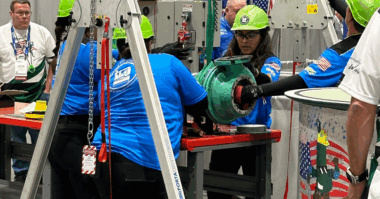“Unprecedented” has become the biggest buzzword of 2020 and the first few weeks of 2021. Here’s another unprecedented reality:
- In December, 140,000 people lost jobs. And all of those people were women with the disparity being greater for Black and Latinx women.
- Add to this that 64% of women are now the sole or co-breadwinners in American families. That number increases for families of women of color.
- McKinsey & Company found that “Women—especially women of color—are more likely to have been laid off or furloughed during the COVID-19 crisis, stalling their careers and jeopardizing their financial security.” The study further found that one in four women are considering downshifting their careers or leaving the workforce altogether given the many challenges faced from the public health, economic, and political crises faced over this past year.
Yes, the stats are dismal, but the manufacturing industry has an opportunity to seize on this dire moment in history. According to Gallup, two million skilled workers are needed in the U.S. manufacturing sector. With women totaling around 47% of the overall U.S. workforce, they still only represent 29% of the manufacturing workforce. Women could be the talent answer that the manufacturing sector desperately needs.
At the Manufacturers Alliance’s recent virtual seminar “Activate Change: Diversity in Manufacturing,” we heard a continuous theme of how manufacturers are engaging and listening to their employees and committing to creating a culture of inclusion and continuous improvement. Manufacturers are hearing the strain and pressures that women are under and acting on their initiatives as partners with their employees.
Most manufacturing companies have taken roles that allow for greater flexibility to work remotely over this past year. Codifying and continuing these options could help companies retain and attract female talent during the crisis and post-pandemic. It could also open the talent pool beyond the area around a facility.
Given the relatively small number of women in manufacturing, and particularly in manufacturing C-level leadership, new female employees might need to develop skills and find role models outside of their facility or company to continue to grow. Offering training and education reimbursement opportunities can be a strong part of your value to grow a generation of strong, female talent.
Only time will tell whether manufacturing’s efforts come to fruition to increase the number of women in the manufacturing workforce. Given the unprecedented challenges faced by everyone, and especially women, over the past year, it is critical companies continue efforts to close the gap on women’s representation in the sector. And with many jobs open, why not shoot for the goal of raising the number of qualified women in manufacturing, which has not changed since the 1970s?




